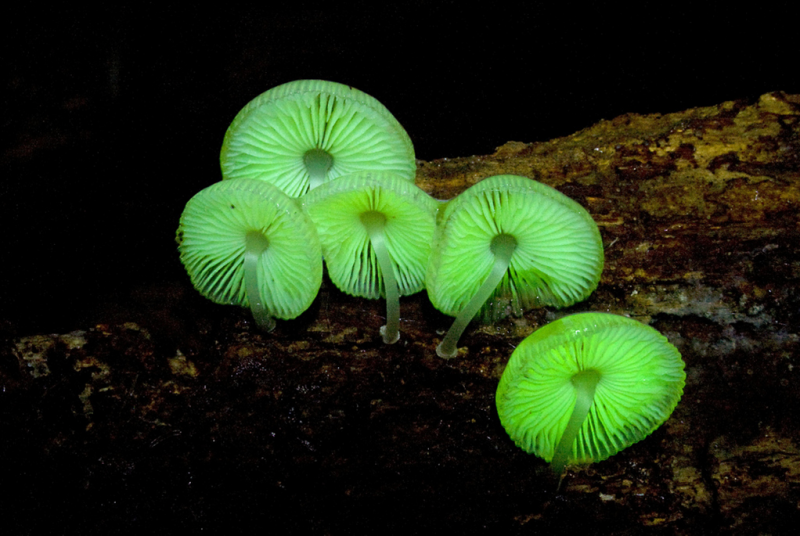Scientists unravel the mystery of The Glowing Mushroom
Dartmouth – Scientists are very close to unravel the mystery of the Glowing Mushrooms. A paper published in the journal “Current Biology” contains the research work done by the scientists. This paper claims that attracting insects, ants and other flies are the main purposes behind the glowing. This is done in order to spread their spores in the surrounding forest. The fungus on focus was Neonothopanus gardneri, which is one of the 71 fungi species capable to emit light.
Different ideas were earlier proposed by the scientific community to explain this luminous behavior of mushrooms and the biological pathway of emitting them. It was also believed that this luminosity was generated as a result of a process that involved oxygen and energy. However, researchers have pointed out that Neonothopanus gardneri had its own circadian rhythm. Glowing was regulated by temperature and stopped during the daytime.
The validity of the research was supported by an experiment conducted by the researchers at Dartmouth’s Geisel School of Medicine. A number of fake glowing mushrooms were planted in the wild to check the outcomes. These fake mushrooms were made of resins glued to an LED light. The light emits the exact same intensity and color of light, which the Neonothopanus gardneri mushrooms emit (green color).
Interestingly, researchers found that the artificial mushrooms had attracted more number of flies than their non glowing control traps. Insects such as rover beetles, flies, wasps, ants, true bugs and more staphilinid were attracted by the glowing mushrooms. However, it is also possible that these beetles were attracted by some factor other than light, such as smell.
Neonothopanus gardneri is particularly found in Brazil. Such fungi were once closely considered to be related to the plant family. However, further research indicates that they are much closer to the animal family. The study concluded that fungi with inherent ability to glow had selective advantage over the ones that didn’t.
